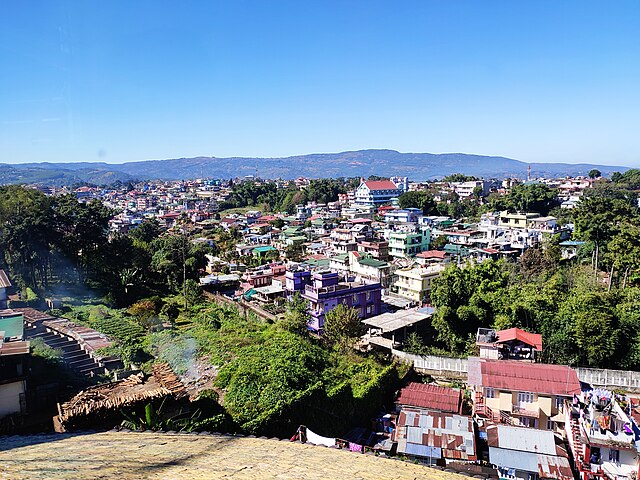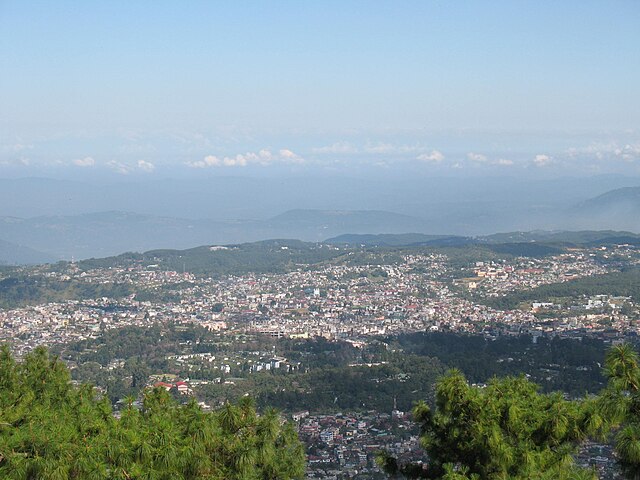Have you ever wondered what it would be like to experience Scotland’s rolling hills and misty landscapes without leaving India? Welcome to Shillong, the enchanting capital of Meghalaya that has earned the affectionate nickname “Scotland of the East.” This hill station isn’t just another tourist destination – it’s a symphony of natural beauty, rich culture, and unforgettable experiences waiting to be discovered.
What Makes Shillong Special?
Shillong stands as a testament to nature’s artistry, where every corner tells a story of breathtaking landscapes and warm hospitality. But what exactly sets this hill station apart from the countless others dotting India’s mountainous regions?
Geographic Location and Climate
Perched at an altitude of 1,496 meters above sea level, Shillong enjoys a subtropical highland climate that feels like a gentle embrace throughout the year. The city’s location in the Khasi Hills provides it with a unique advantage – pleasant weather when most of India swelters under scorching heat.
The rolling hills surrounding Shillong create a natural amphitheater that traps cool breezes and maintains moderate temperatures. During summer months, when cities like Delhi and Mumbai become furnaces, Shillong remains a cool refuge with temperatures hovering between 15°C to 25°C. Isn’t it amazing how geography can create such natural air conditioning?
Cultural Heritage and Traditions
The heart of Shillong beats with Khasi traditions that have been preserved for centuries. The matrilineal society here offers a fascinating glimpse into a culture where women hold significant social importance. You’ll find that local customs blend seamlessly with modern influences, creating a unique cultural tapestry.
Music flows through Shillong’s veins like lifeblood. The city has produced numerous talented musicians and continues to nurture musical talent through various festivals and events. Rock music, in particular, has found a special home here, earning Shillong the additional title of “Rock Capital of India.”
Top Tourist Attractions in Shillong

Every traveler’s journey through Shillong should include these must-visit destinations that showcase the city’s natural and cultural wealth.
Ward’s Lake: A Serene Urban Oasis
Imagine a perfectly manicured garden surrounding a horseshoe-shaped lake, complete with colorful flowers, walking paths, and the gentle sound of water lapping against the shores. Ward’s Lake serves as Shillong’s green lung, offering visitors a peaceful retreat from urban hustle.
The lake, artificially created in 1894, spans across a significant area and features well-maintained gardens that bloom with seasonal flowers. Boating facilities allow visitors to explore the lake from a different perspective, while the surrounding walkways provide perfect spots for morning jogs or evening strolls.
Elephant Falls: Nature’s Spectacular Display
The three-tiered Elephant Falls represent one of Shillong’s most photographed natural attractions. Each tier offers a different perspective of cascading water, creating a mesmerizing display that changes with the seasons.
During monsoon months, the falls roar with tremendous force, while during drier periods, they offer a gentler, more contemplative experience. The trek to reach all three tiers provides moderate exercise and rewards visitors with increasingly spectacular views.
Shillong Peak: Panoramic Views of the City
Standing at 1,965 meters, Shillong Peak offers the highest vantage point in the region. The 360-degree views from the summit encompass the entire Shillong plateau, surrounding hills, and on clear days, even the plains of Bangladesh.
The peak serves multiple purposes – it’s a sacred site for local Khasi people, a telecommunications hub, and a premier tourist destination. The journey to reach the peak involves a scenic drive through pine forests and meadows that prepare visitors for the breathtaking views awaiting them.
Best Time to Visit Shillong Peak
Early morning visits to Shillong Peak offer the clearest views and most comfortable temperatures. The golden hour just after sunrise provides spectacular photography opportunities, while avoiding the afternoon crowds ensures a more peaceful experience.
Don Bosco Centre for Indigenous Cultures
This seven-story museum stands as Asia’s largest repository of indigenous cultural artifacts. Each floor represents different aspects of Northeast Indian tribal life, from traditional costumes and tools to architectural models and historical photographs.
The museum’s unique spiral design allows visitors to journey through time and culture in a structured manner. Interactive exhibits and detailed explanations make complex cultural concepts accessible to visitors from all backgrounds.
Adventure Activities and Outdoor Experiences
Shillong’s topography and natural features create perfect conditions for various outdoor adventures that cater to different skill levels and interests.
Trekking and Hiking Opportunities
The hills surrounding Shillong offer numerous trekking routes that range from gentle nature walks to challenging multi-day expeditions. Popular routes include the David Scott Trail, which follows a historic British-era path, and various shorter trails that lead to hidden waterfalls and viewpoints.
These treks provide opportunities to experience rural Khasi life, encounter diverse flora and fauna, and enjoy pristine natural environments. Local guides enhance the experience by sharing knowledge about local plants, wildlife, and cultural significance of various landmarks.
Water Sports and River Activities
The numerous rivers and lakes around Shillong provide excellent opportunities for water-based activities. River rafting, kayaking, and angling attract adventure enthusiasts who want to experience the region’s waterways.
Umiam Lake, located about 15 kilometers from Shillong, serves as the primary hub for water sports. The lake’s calm waters and scenic surroundings create ideal conditions for beginners and experienced water sports enthusiasts alike.
Local Cuisine and Food Culture
Shillong’s food scene reflects its cultural diversity and geographic location, offering flavors that blend traditional Khasi ingredients with influences from neighboring regions and modern culinary trends.
Traditional Khasi Dishes
Khasi cuisine emphasizes fresh, locally sourced ingredients and simple preparation methods that highlight natural flavors. Rice serves as the staple grain, accompanied by various meat and vegetable dishes that showcase the region’s agricultural diversity.
Jadoh, a traditional rice dish cooked with meat and aromatic spices, represents one of the most popular local specialties. Tungrymbai, made from fermented soybeans, offers a unique flavor profile that might surprise visitors unfamiliar with fermented foods.
Where to Find Authentic Local Food
Local markets and small family-run restaurants provide the most authentic culinary experiences. Police Bazaar area hosts several establishments that serve traditional Khasi food alongside more familiar Indian and international options.
Don’t miss trying street food vendors who offer fresh, affordable local snacks and quick meals. These vendors often use family recipes passed down through generations, providing flavors that upscale restaurants sometimes can’t replicate.
Accommodation Options in Shillong

Shillong’s accommodation landscape caters to diverse budgets and preferences, from luxury resorts to backpacker hostels and everything in between.
Luxury Hotels and Resorts
Premium accommodations in Shillong focus on providing guests with comprehensive amenities while showcasing local architecture and design elements. Many luxury properties offer spa services, multi-cuisine restaurants, and concierge services that help guests explore the region.
These establishments often feature traditional Khasi design elements combined with modern comfort features. Private balconies with hill views, locally sourced furnishings, and personalized service create memorable staying experiences.
Budget-Friendly Stays
Budget accommodations in Shillong don’t compromise on cleanliness or basic amenities. Guesthouses, homestays, and budget hotels provide comfortable lodging options that allow travelers to allocate more resources to experiences and activities.
Many budget properties are family-run establishments where guests can interact with local families and gain insights into daily Khasi life. These accommodations often provide home-cooked meals and personalized recommendations for local attractions.
Getting to Shillong: Transportation Guide
Reaching Shillong requires some planning, but multiple transportation options make the journey accessible from various parts of India.
By Air: Nearest Airports
Umroi Airport, located about 30 kilometers from Shillong, serves as the closest air connectivity option. However, limited flight schedules mean many travelers prefer using Guwahati’s Lokpriya Gopinath Bordoloi International Airport, which offers more frequent connections to major Indian cities.
The drive from Guwahati to Shillong takes approximately 3-4 hours and provides scenic views of the countryside. Taxi services, buses, and private vehicle rentals offer various options for completing this journey.
By Road: Scenic Routes
Road travel to Shillong offers some of India’s most scenic driving experiences. The routes wind through tea gardens, small villages, and changing landscapes that provide glimpses of Northeast India’s diverse geography.
Multiple bus services operate between Shillong and major cities like Guwahati, with both government and private operators offering different comfort levels and price points. The journey becomes part of the adventure, with stops at small towns and roadside eateries adding local flavor to the travel experience.
Best Time to Visit Shillong
Understanding Shillong’s seasonal patterns helps travelers plan visits that align with their preferences and planned activities.
Weather Patterns Throughout the Year
Shillong experiences three distinct seasons that each offer different advantages for visitors. The winter months (November to February) provide clear skies and comfortable temperatures perfect for sightseeing and outdoor activities.
Spring and early summer (March to June) bring blooming flowers and mild weather that make this period ideal for nature lovers and photographers. The monsoon season (July to September) transforms the landscape into lush green vistas but may limit some outdoor activities due to heavy rainfall.
Post-monsoon months (October to November) offer the perfect balance of clear weather and green landscapes, making this period particularly popular among tourists seeking the best of both worlds.
Shopping and Local Markets
Shopping in Shillong provides opportunities to acquire unique local products while supporting local artisans and businesses.
Police Bazaar: The Heart of Shopping
Police Bazaar serves as Shillong’s primary commercial hub, where narrow lanes house shops selling everything from traditional handicrafts to modern electronics. The bazaar’s energy and variety create an engaging shopping experience that reflects local commercial culture.
Local handicrafts, including traditional textiles, bamboo products, and handwoven items, make excellent souvenirs that carry authentic regional character. Bargaining is expected and adds an interactive element to the shopping experience.
Day Trips and Nearby Attractions
Shillong’s central location makes it an excellent base for exploring other remarkable destinations in Meghalaya.
Cherrapunji: The Wettest Place on Earth
Located about 50 kilometers from Shillong, Cherrapunji holds the world record for highest annual rainfall. The journey to Cherrapunji provides spectacular views of deep valleys and cascading waterfalls.
Living root bridges near Cherrapunji represent one of nature’s most fascinating examples of bio-engineering, where local Khasi people have trained rubber tree roots to form functional bridges across streams and rivers.
Mawlynnong: Asia’s Cleanest Village
This small village, about 90 kilometers from Shillong, gained international recognition for its cleanliness and community-based tourism initiatives. The village showcases sustainable living practices and traditional Khasi culture in an authentic setting.
Visitors can experience rural Khasi life, enjoy home-cooked meals, and participate in community activities that provide insights into sustainable development practices.
Conclusion
Shillong emerges as more than just a hill station – it’s a complete experience that combines natural beauty, cultural richness, and modern amenities in perfect harmony. Whether you’re seeking adventure activities, cultural immersion, or simply a peaceful retreat from urban stress, Shillong delivers experiences that create lasting memories.
The city’s unique blend of traditional Khasi culture and contemporary influences creates an atmosphere that feels both exotic and welcoming. From the misty mornings at Shillong Peak to the vibrant evenings at Police Bazaar, every moment in this Scotland of the East offers something special.
Planning your visit to Shillong means preparing for a journey that will challenge your expectations and reward your sense of adventure. The city awaits with open arms, ready to share its stories, flavors, and natural wonders with travelers who appreciate authentic experiences.
Frequently Asked Questions
1. What is the best time to visit Shillong for first-time tourists? The best time for first-time visitors is between October and April when the weather is pleasant and most attractions are easily accessible. This period offers clear skies for sightseeing and comfortable temperatures for outdoor activities.
2. How many days should I plan for a complete Shillong experience? A minimum of 4-5 days allows you to cover major attractions within Shillong and take day trips to nearby destinations like Cherrapunji or Mawlynnong. Adventure enthusiasts might want to extend their stay to 7-10 days to fully explore trekking and outdoor activities.
3. Is Shillong safe for solo female travelers? Yes, Shillong is generally considered safe for solo female travelers. The local culture is respectful, and crime rates are relatively low. However, standard travel precautions like avoiding isolated areas after dark and staying in reputable accommodations are always recommended.
4. What should I pack for a trip to Shillong? Pack layered clothing as temperatures can vary throughout the day. Include light woolens even during summer months, comfortable walking shoes, rain gear during monsoon season, and sun protection. Don’t forget a good camera to capture the stunning landscapes.
5. Can I find vegetarian food options easily in Shillong? While Khasi cuisine traditionally includes meat, Shillong offers numerous vegetarian restaurants and many establishments can prepare vegetarian versions of local dishes. Indian restaurants in the city serve familiar vegetarian options, and most hotels can accommodate vegetarian dietary requirements.

